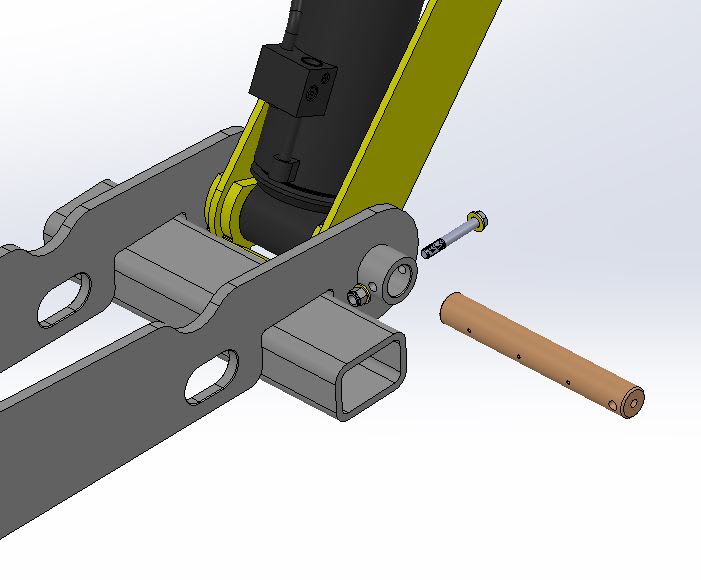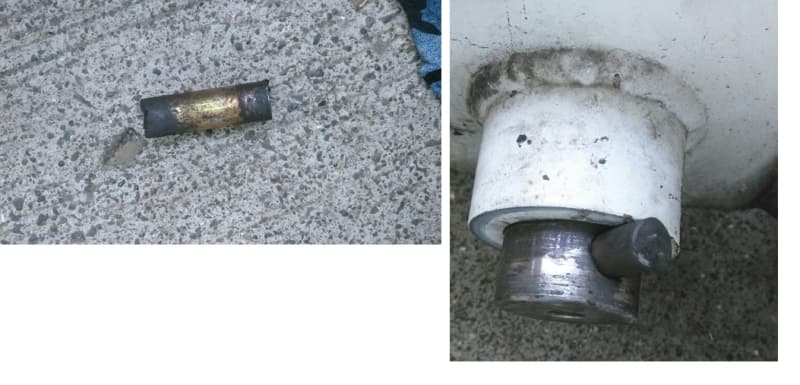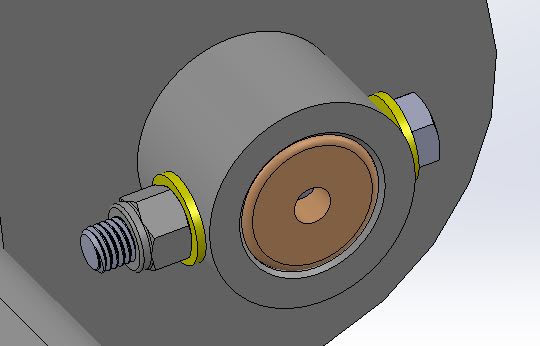Thanks for your answers so far.
At first my post was more about the theory that the higher the tension in the bolt, the less it would take to shear it.
But as I understand you want to know more about the reason why I ask the question.
So here is an image.
It's a load-lifting mechanism (cylinder is black and the mechanism is yellow) attached to a chassis (grey) and the pivot is orange and you see the locking mechanism that is a 5/8-11 Grade 8 bolt that is running through the "locking ring" welded onto the chassis. The shaft is 2"OD, the locking ring is 3" OD.
At the installation, the torque on the bolt is not controlled (no torque wrench). The bolt is installed with an impact wrench. From my research, the impact could give a torque up to 600lbs.ft. Not that I have reasons to believe it was torque this high but I just don't know how each mechanic "insists" on the impact.. The suggested torque for this fasteners is somewhere between 170-220 (lub-dry).
We've had failures in service that looks like double shear I believe:
So, obviously we will need to specify the torque, and since I suspect over-torquing being a part of the problem, I would tend to keep the torque minimal to allow more room to withstand higher shear but I know that doing this, I'm removing the friction from my side but from what FEA have shown me is that a 200 lbs.ft would not squeeze the shaft enough that the bolt would not see any shear.
Also, If you have good shaft-locking mechanisms you want to share, I'll be glad to consider.
Thanks again!



